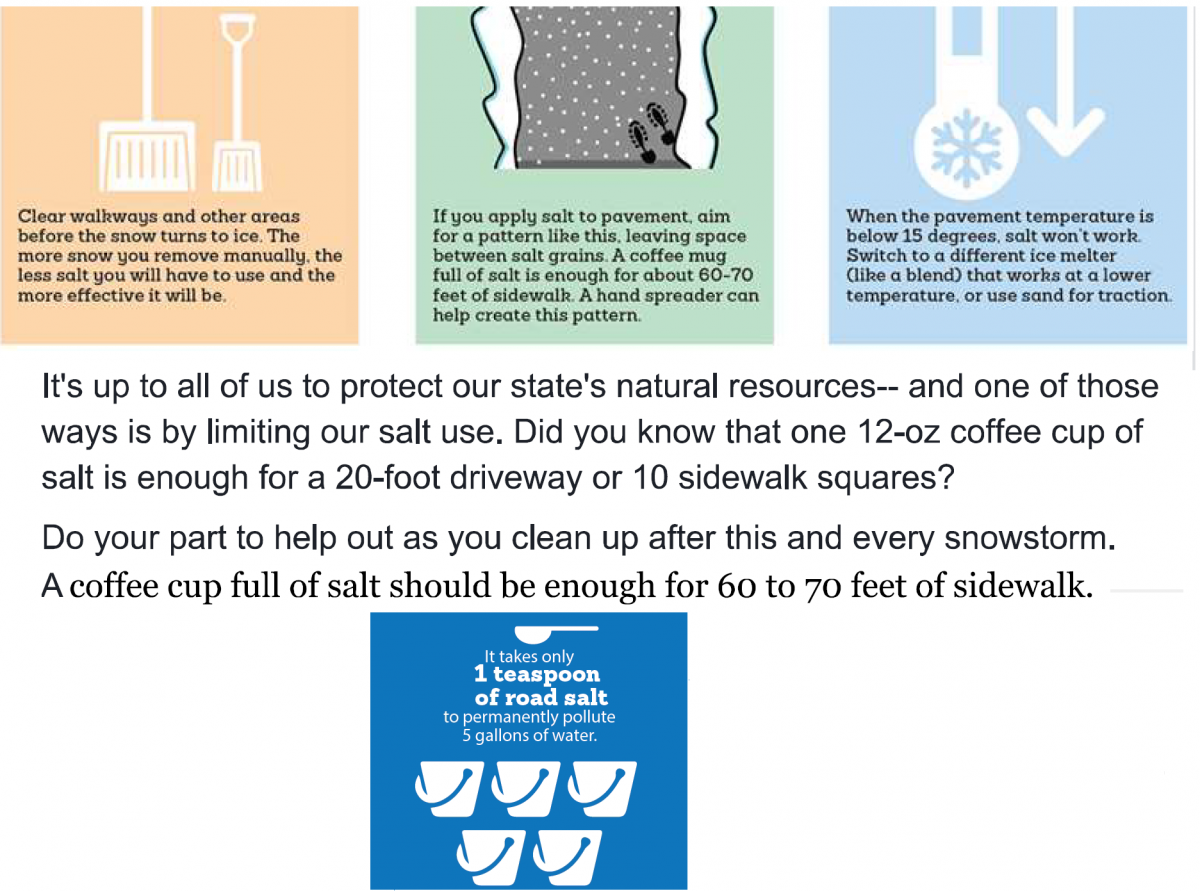1. Lake users are reminded that with the deeper water now present in the dredged portions of the lake, and the recent variations in temperature, ice formation on the lake this winter may be variable. Please use caution when on the lake unless you are positive of safe ice conditions.
2. Another feature of our current winter weather has been several ice events, which can make moving about safely a bit of a challenge. While the use of ice-melting salt on roadways driveways and sidewalks can help make conditions less slippery in certain conditions, it is important to note that this same salt can end up in our groundwater drinking water supply, as well as Wonder Lake and Nippersink Creek. De-icers are often applied under the “more is better” approach, which can have negative impacts. Information is provided on Page 2 about salt impacts and proper deicer applications. Additional information can be found at: https://www.wisaltwise.com/Oversalting & https://www.iwla.org/water/stream-monitoring/salt-watch
3. The McHenry County Department of Planning & Development recently agreed to resume their annual cost-share contribution for the operation of the United States Geological Survey (USGS) stream gage on Nippersink Creek at Thompson Road. This gage provides valuable real-time information on rainfall, changes in creek water level, and the volume of flow coming down the Nippersink Creek before it discharges into Wonder Lake. In addition to being useful to Wonder Lake shoreline owners and the MPOA in determining when high water levels are expected, it is also part of the stream gaging network that helps forecast flooding events farther downstream on Nippersink Creek, as well as on the Chain O’Lakes / Fox River. This information can be accessed at: https://waterdata.usgs.gov/nwis/uv?site_no=05548105&legacy=1
4. The 2023 Illinois Lake Management Association (ILMA) Conference will be held on March 8th -11th at the Holiday Inn — Gurnee Convention Center, 6161 West Grand Ave in Gurnee. Registration information can be found at https://ilma-lakes.org/conference
Our Lakes Are Getting Saltier
According to research from Center for Limnology, North America’s lakes are getting saltier. And this is mostly thanks to the use of salt to clear winter roads and parking lots here in the Midwest and the Northeastern U.S.
In fact, 44% of North America’s lakes are getting saltier. If current trends continue, many North American lakes will surpass Environmental Protection Agency (EPA)-recommended chloride levels in 50 years. According to a recent study, 14 North American lakes are expected to exceed the EPA’s aquatic life criterion concentration of 230 mg/L by 2050, and 47 are on track to reach chloride concentrations of 100 mg/L by then, which is bad news for the plants and animals that call them home. While some species may be better able to tolerate salty waters than others, our native species are adapted to freshwater. Salt will stress them out and any kind of stress is taking away from their ability to survive and reproduce.
Elevated chloride levels have also been shown to alter the composition of fish, invertebrates and the plankton that form the base of the aquatic food web in lakes. Aquatic species richness and abundance can decline, and in extreme cases salinization can prevent lakes from mixing, causing low oxygen conditions that smother aquatic life and reduce water quality.
http://blog.limnology.wisc.edu/to-keep-our-freshwater-fresh-we-need-to-…

